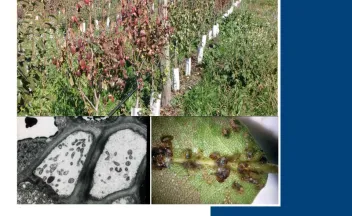El decaimiento del peral en Uruguay: aspectos generales y trabajos experimentales de INIA Las Brujas.

La presente publicación tiene como objetivo brindar información acerca de una importante enfermedad que afecta al cultivo del peral y que, desde hace algunos años ha sido detectada en nuestro país. El decaimiento del peral probablemente haya estado entre nosotros desde hace mucho tiempo, pero, es en estos últimos años que cobró importancia debido a algunos cambios introducidos en el cultivo y a la relevancia que ha cobrado su vector, la psila.

